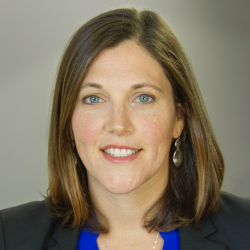Project Based Learning will be essential in this moment, now more than ever.
Schools and districts around the country are considering how to proceed with curriculum, instruction, and assessment as schools “open” this fall. In their planning, they should be making space and time for PBL.
As PBLWorks CEO Bob Lenz says in his post, This Teachable Moment: How PBL Can Shift the Future of Education, “PBL is truly a means of keeping kids engaged in learning and growing now, and a key to fostering the creativity, initiative, and resilience they’ll need to thrive in our rapidly changing world.”
With this mindset and aspiration in mind, schools and districts should consider the following five steps, not necessarily in this exact order, to ensure PBL is part of their solution to the challenges they face.
1. Review the district or school curriculum and identify priorities through teacher and leader collaboration, rather than in isolation.
Every organization will likely have varying criteria for determining their priorities. However, priorities will likely include identifying standards and aligned content and skills. Teams can consider how these priorities align to the district and school vision, their portrait of a graduate or other overarching outcomes they have for their students. In many cases, the curriculum may have emphasized breadth over depth and coverage rather than opportunities for curiosity and inquiry. This moment provides an opportunity to emphasize the latter.
2. Through the process of identifying curricular priorities, give permission to teachers to make space for student voice, addressing current events and the current context in which we live—and create opportunities for action.
The pressure to “cover everything” should be eliminated in order to welcome students back to school and focus on relationships, connections, and engaging learning experiences that are responsive to their needs and interests. Many teachers I work with felt concerned that they couldn’t cover everything in the spring and wanted to plan ahead for the future, as well as prioritize their relationships with students. Identifying priorities will help lessen the stress for them.
3. Make choices and changes, in the prioritization process, using a culturally responsive and anti-racist lens.
The Culturally Relevant Curriculum Scorecard, developed by the Metropolitan Center for Research on Equity and the Transformation of Schools, New York University, offers three major criteria for reviewing curriculum: Representation, Social Justice Orientation, and Teachers’ Materials. This tool can help to create a lens to guide the work of identifying curricular priorities.
For example, the team identifying the priorities can ask themselves how their choices are considering “Decolonization, Power, & Privilege” as described in the scorecard. This is especially relevant in social studies and humanities, which is my area of focus as an instructional leader. Teams might ask, “How are we considering representation when we are making choices that will guide the work of teachers and students?” This is an opportunity to make a statement and make potentially needed changes that signify what matters to an organization and its stakeholders.
4. Share the priorities with all teachers in order to encourage and make space for PBL in the classroom.
In doing this, prioritize collaboration and planning time for teachers. Collaboration time, likely virtual, offers a valuable opportunity to engage in practices that can model what PBL learning can look like for students. Specifically, engaging in protocols to create, share, and give and receive feedback on project planning in progress is essential. As a curricular and instructional leader, I found that the experience of planning for emergency distance education reaffirmed the importance of teacher collaboration as we made opportunities for focus groups, consultancy protocols for feedback, and peer coaching.
5. Whenever possible, offer new or ongoing learning opportunities to help teachers grow and calibrate their understanding of both Gold Standard project design and teaching practices.
Consider the many offerings from PBLWorks for teacher trainings such as the PBL 101 or Project Slice. Additionally, PBLWorks offers a library of project ideas, tools and resources, as well as a project planner to support this work.
I recently worked with a cohort of new teachers in my district where we utilized the book Setting the Standard for Project Based Learning by John Larmer, John Mergendoller and Suzie Boss as a core text for our work. Through engaging in a book study while developing projects, the teachers noted that this book served as a wonderful guide that they could continue to go back to as they developed their projects.
I, personally, continue to be inspired and encouraged by the hopefulness of teachers that I work with to engage in this work, despite the uncertainty of our times. Their drive and dedication to Project Based Learning will be what we need to “keep kids engaged and learning and growing now.”


